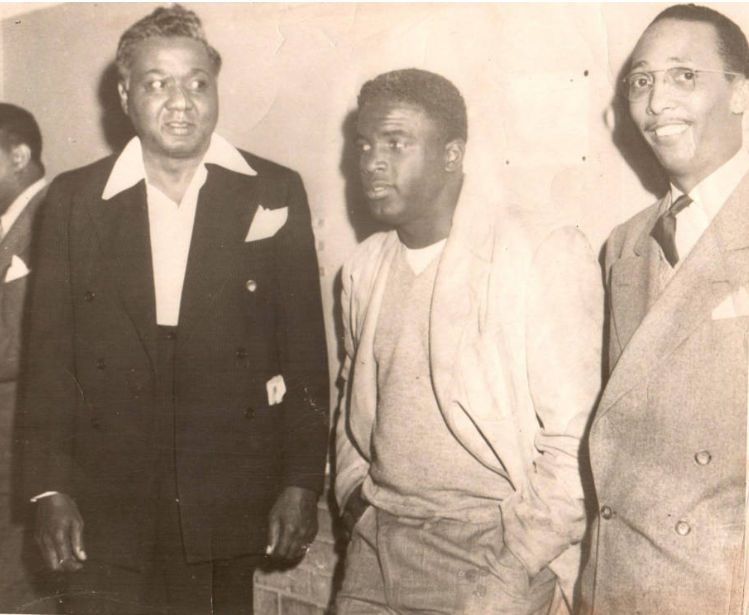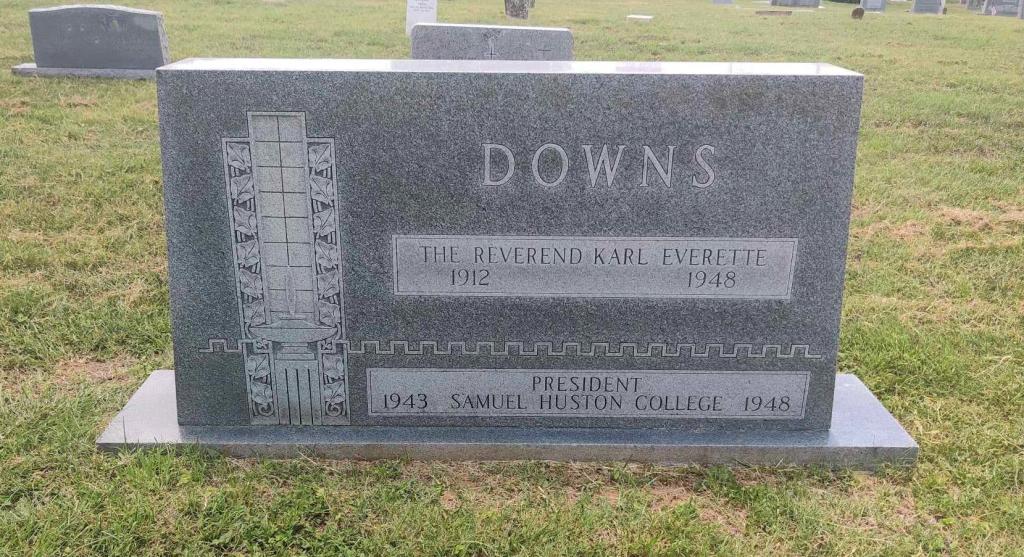Dr. Rev Karl Everett Downs
Karl Downs was an influential minister and educator who affected the lives of many children and young adults in his work with his community, his church, and as president of Samuel Huston College.
With degrees from Samuel Huston College (now Huston-Tillotson College); Gammon Theological Seminary in Atlanta, Georgia; and from Boston University. He later received an honorary doctor of divinity degree from Gammon Theological Seminary, and at the time of his death he was a Ph.D. candidate at the University of Southern California.

Portrait of Dr. Rev. Downs courtesy of the Austin History Center
After his graduation from Boston University in 1937, where he earned a masters of sacred theology, he worked as a recruiter with college youth for the Methodist Board of Foreign Missions before moving to Pasadena, California to serve as a pastor for Scott Methodist Church.
While there, he focused on helping children and teenagers. He worked to organize a nursery, build a church recreational yard, and provided toys for kids. Downs saw that young people were generally part of church life only because of their parents. Their relationships with the church on their own were not strong. To change this, he planned dances at the church and installed a badminton court. His changes made the church a more engaging place for the younger crowd and gave them a sense of belonging and alternative place to spending their time on the streets. Despite the objections of some older members of the church, his changes brought in new families and eventually even improved the finances of the church itself.
One of the teenagers Downs reached out to was legendary baseball player Jackie Robinson. Robinson saw Downs as someone who was both stubborn and courageous, who believed in creating change and sticking with it, despite criticism from others.
Downs was also good about listening. He would often bond with kids, like Robinson, while playing sports and listening to them talk about their concerns and problems, often applying a Bible story to a real life situation in order to provide guidance. This investment caused Robinson to become more involved in the church and he even volunteered to teach Sunday school while attending UCLA. According to Robinson, it was impossible to slack off from your responsibilities when Karl Downs was involved.
Downs would continue to influence Robinson’s life after they both left Pasadena. Robinson was discharged from the Army in 1943 while he was stationed at Fort Hood, near Samuel Huston College, where Downs had just been selected as President for the college. As the youngest president of a university at the time he hired Robinson to be the basketball coach and athletics director. And after Robinson left to join the farm club for the Dodgers, Downs traveled to Pasadena to preside over Robinson’s marriage to Rachel Isum.

Pictured: Dr. Givens, Jackie Robinson, and Dr. Rev. Downs courtesy of the Austin History Center
His influence and work for the betterment of his community was extraordinary. In the four and a half years he served as president of Sam Huston enrollment for the university rose from 174 students to more than 600 students. He was a member of Alpha Phi Alpha, the American Sociological Society, the National Association of College Presidents, and the NAACP. He also published religious articles in various publications as well as publishing a collection of biographical sketches of various famous and accomplished Black Americans from the 19th and 20th centuries in a book titled Meet the Negro in 1943.
In 1947 Downs became ill while traveling to Ebbets Field in New York to celebrate Jackie Robinson being honored by the Brooklyn Dodgers after winning Rookie of the Year. Downs was taken to a Brooklyn hospital where he recovered and returned to Austin. However, he became ill again the following year and was admitted to Brackenridge Hospital in Austin for an emergency operation.
There were complications following the procedure and, as it was a segregated hospital, he was not allowed to remain in a recovery room for observation due to the decision made by his white doctor.
He was instead transferred into the segregated ward, where he died on February 26, 1948 and was buried in Evergreen Cemetery near where his mother would be buried two years later.


